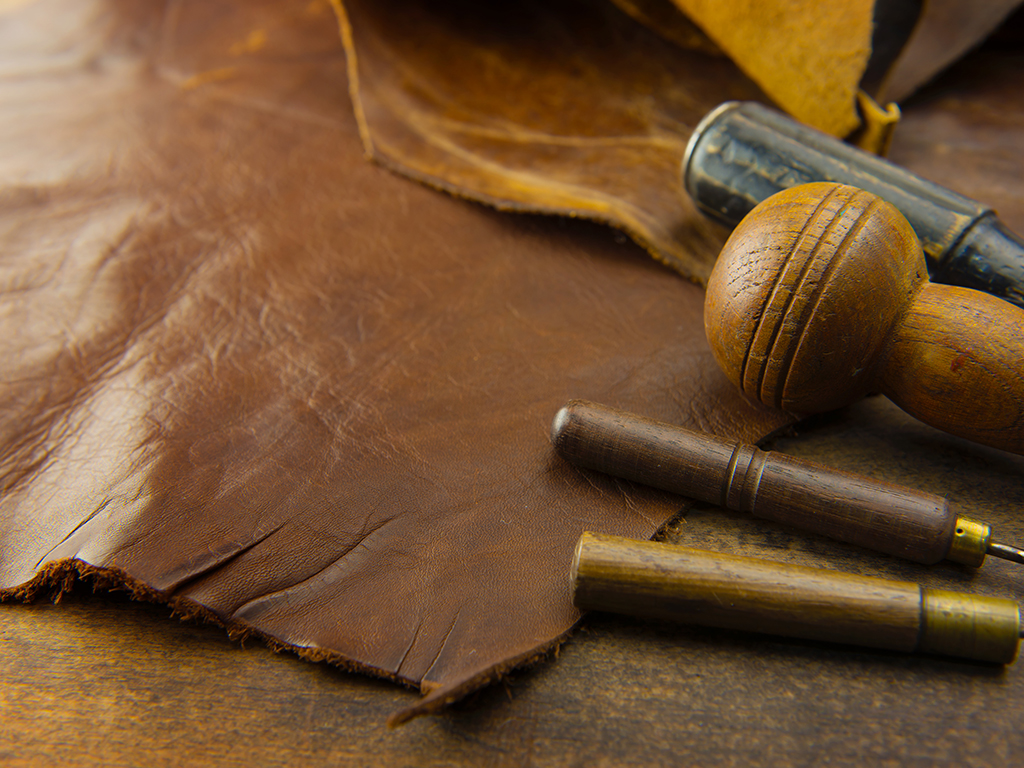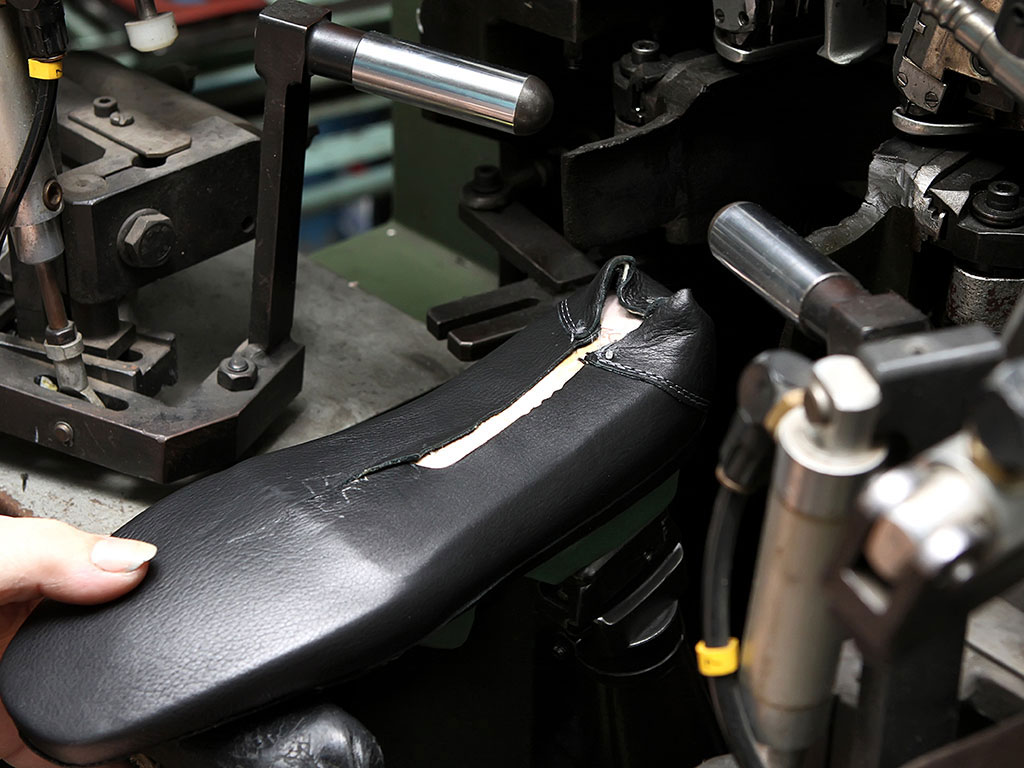Leather processing in Serbia dying out – Investments in equipment and incentives needed to improve production and quality
Source: eKapija
 Monday, 25.07.2016.
Monday, 25.07.2016.
 01:03
01:03
 Monday, 25.07.2016.
Monday, 25.07.2016.
 01:03
01:03
(Photo: optimarc/shutterstock.com)

According to the data by the Chamber of Commerce of Serbia, the sector of leather tanning and finishing and the production of leather goods recorded a drop in production by 36.6% in 2015. The supplies were reduced by 2% and the realization by 27.8%.
Several small manufacturers operate without the state’s help and aren’t able to expand the production, because the equipment is very expensive, says the Association of Textile, Garments, Leather and Footwear Industry at the CCIS.
– Investments in the equipment for processing and tanning leather are very high, especially due to environmental demands, which means that there’s no serious production without favorable loans or grants.
The company Kodex processes 600 pieces of raw hide a day. The facility at Deronje buys raw hide (sheep, goat, calf), processes it, produces finished goods and sells them. In addition to processing for their own production, they also process hide for other local facilities.
– We do not export anywhere directly, not even semi-finished goods, because the market of the EU and other potential buyers is first of all very selective when it comes to quality, and then there are the unrealistic demand and unrealistic terms of payment, which is why we sell goods exclusively through unions in local companies – says Milos Stojacic, owner of Kodex, for eKapija.
According to our interviewee, most of local leather ends up in foreign markets anyway. Steerhide and cowhide are mostly exported to the EU, and sheephide, goathide and calfhide remain in Serbia. The current purchase and processing prices of small hides are extremely low and unfavorable, as the purchase power in the world is constantly dropping.
In order to make them more competitive and to reach as many buyers as possible, the leather itself and the processing system in Serbia need to significantly increase the quality, especially when it comes to raw materials for the footwear industry, which still dominates the leather processing sector and makes up 80% of the production.
– Footwear production in Serbia has nearly died out, and those who still produce mostly do toll manufacturing, which requires raw materials of higher quality. The same can be said of the Ruma-based Luxury Tannery, which doesn’t buy raw hide in Serbia – Stojacic explains.
The situation is grim when it comes to the main raw material in the leather industry too. As they note in the CCIS, the livestock population is getting slower year by year, which means that it will get increasingly difficult to get quality raw hide in large quantities locally in the years to come.
The processers point out that this is due to a lack of state strategy regarding the development of this industry.
– There are raw materials which we can’t process because we lack conditions, capacities and equipment. We buy raw hide from agricultural producers and slaughterhouses, and while it is true that there should be more livestock, the problem is that slaughterhouses in Serbia aren’t equipped with machinery for cleaning, and then there’s a lack of appropriate equipment, in which it doesn’t pay to invest. It takes EUR 10-20 million to create a proper leather processing factory, and there’s no one to finance that – Stojacic says.
The CCIS points out that, in order to aid the development of the waning leather industry, the state needs to lower the taxes, as they are at their highest in Serbia (in B&H, Croatia and Slovenia, they are below 40%). It’s also crucial, as they note, to suppress the gray economy and to provide incentives.
(Photo: Serhii Neznamov/shutterstock.com)

Some producers also complain about being unable to sell of finished goods. SZTPR Derma tans 5,000-6,000 pieces of leather a year. In Zajecar, where it operates, it hasn’t sold a leather jacket in 3 years.
– The production is not doing well, there are no buyers. We export a little, and the last shipment was sent a month and a half ago to Slovenia, between 800 and 1000 pieces – says Vlastimir Antanasijevic, owner of Derma, for eKapija. The company stores, processes, produces furs and personal protective equipment, and also buys and sells small and large raw hides.
Unlike this manufacturer, which procures raw materials from local farmers and slaughterhouses, Novi Sad-based Manual imports hide from Italy and Turkey.
As Sinisa Zarin, the company’s owner, said in his last year’s interview for eKapija, they’re not bothered by the bad conditions in Serbia, nor the fact that they used to get their materials in Fabrika Koze Ruma, only 13 km from Novi Sad, and that they are now relying on Italy and Turkey.
– We import the latest technologies and produce vegetable-tanned leather – Zarin said and added that bags of this brand are sold for as much as EUR 1,000 abroad.
Ivana Bezarevic
Companies:
 Udruženje za industriju tekstila, odeće, kože i obuće PKS Beograd
Udruženje za industriju tekstila, odeće, kože i obuće PKS Beograd
Fabrika kože a.d. Ruma
 Kodex-Stojačić Deronje
Kodex-Stojačić Deronje
 Manual d.o.o. Novi Sad
Manual d.o.o. Novi Sad
Dafar d.o.o. Zrenjanin
 Derma Zaječar
Derma Zaječar
Comments
Your comment
Most Important News
Full information is available only to commercial users-subscribers and it is necessary to log in.
Follow the news, tenders, grants, legal regulations and reports on our portal.
Registracija na eKapiji vam omogućava pristup potpunim informacijama i dnevnom biltenu
Naš dnevni ekonomski bilten će stizati na vašu mejl adresu krajem svakog radnog dana. Bilteni su personalizovani prema interesovanjima svakog korisnika zasebno,
uz konsultacije sa našim ekspertima.


 Izdanje Srbija
Izdanje Srbija Serbische Ausgabe
Serbische Ausgabe Izdanje BiH
Izdanje BiH Izdanje Crna Gora
Izdanje Crna Gora


 News
News






